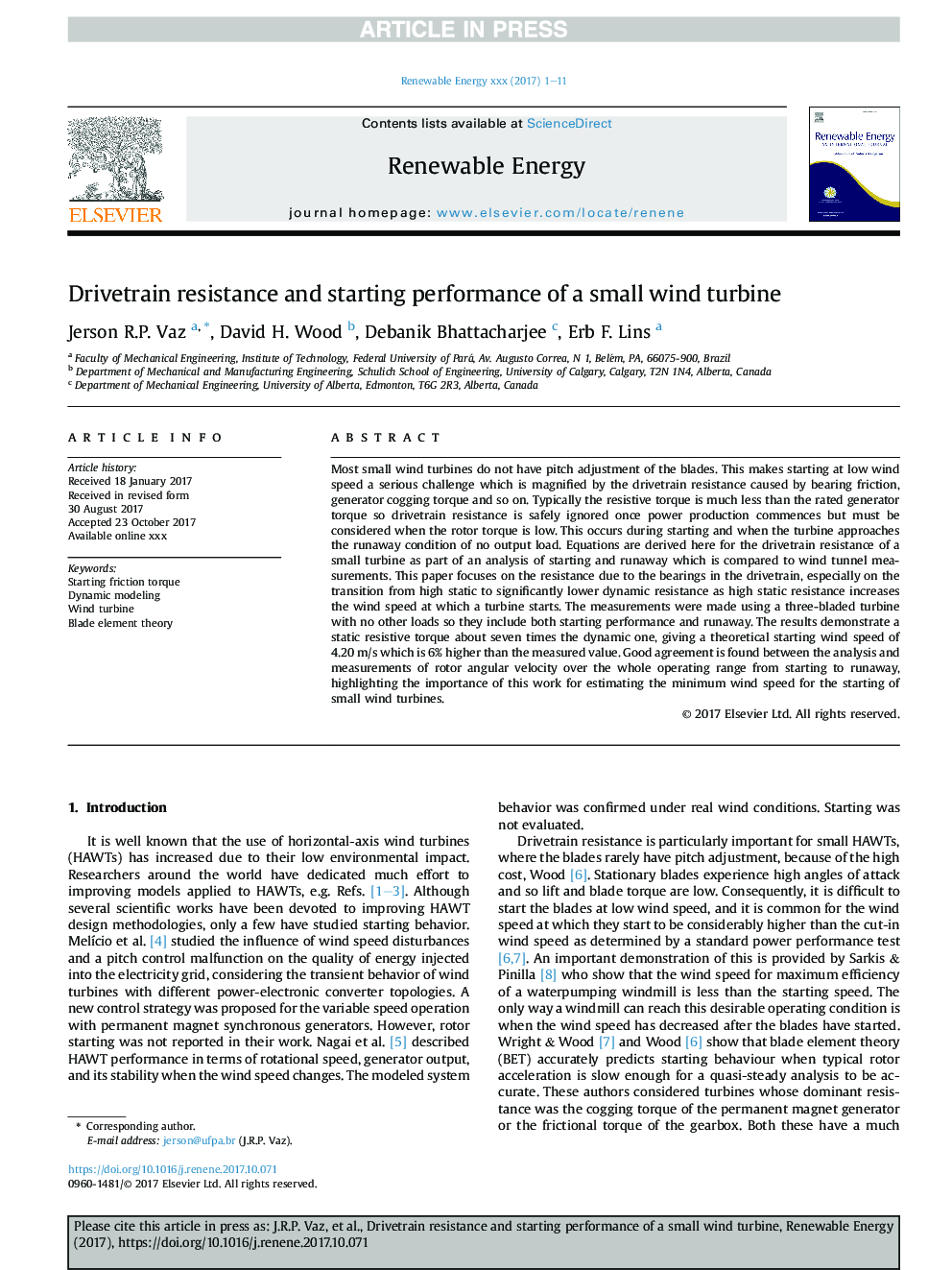| Article ID | Journal | Published Year | Pages | File Type |
|---|---|---|---|---|
| 6765099 | Renewable Energy | 2018 | 11 Pages |
Abstract
Most small wind turbines do not have pitch adjustment of the blades. This makes starting at low wind speed a serious challenge which is magnified by the drivetrain resistance caused by bearing friction, generator cogging torque and so on. Typically the resistive torque is much less than the rated generator torque so drivetrain resistance is safely ignored once power production commences but must be considered when the rotor torque is low. This occurs during starting and when the turbine approaches the runaway condition of no output load. Equations are derived here for the drivetrain resistance of a small turbine as part of an analysis of starting and runaway which is compared to wind tunnel measurements. This paper focuses on the resistance due to the bearings in the drivetrain, especially on the transition from high static to significantly lower dynamic resistance as high static resistance increases the wind speed at which a turbine starts. The measurements were made using a three-bladed turbine with no other loads so they include both starting performance and runaway. The results demonstrate a static resistive torque about seven times the dynamic one, giving a theoretical starting wind speed of 4.20Â m/s which is 6% higher than the measured value. Good agreement is found between the analysis and measurements of rotor angular velocity over the whole operating range from starting to runaway, highlighting the importance of this work for estimating the minimum wind speed for the starting of small wind turbines.
Related Topics
Physical Sciences and Engineering
Energy
Renewable Energy, Sustainability and the Environment
Authors
Jerson R.P. Vaz, David H. Wood, Debanik Bhattacharjee, Erb F. Lins,
